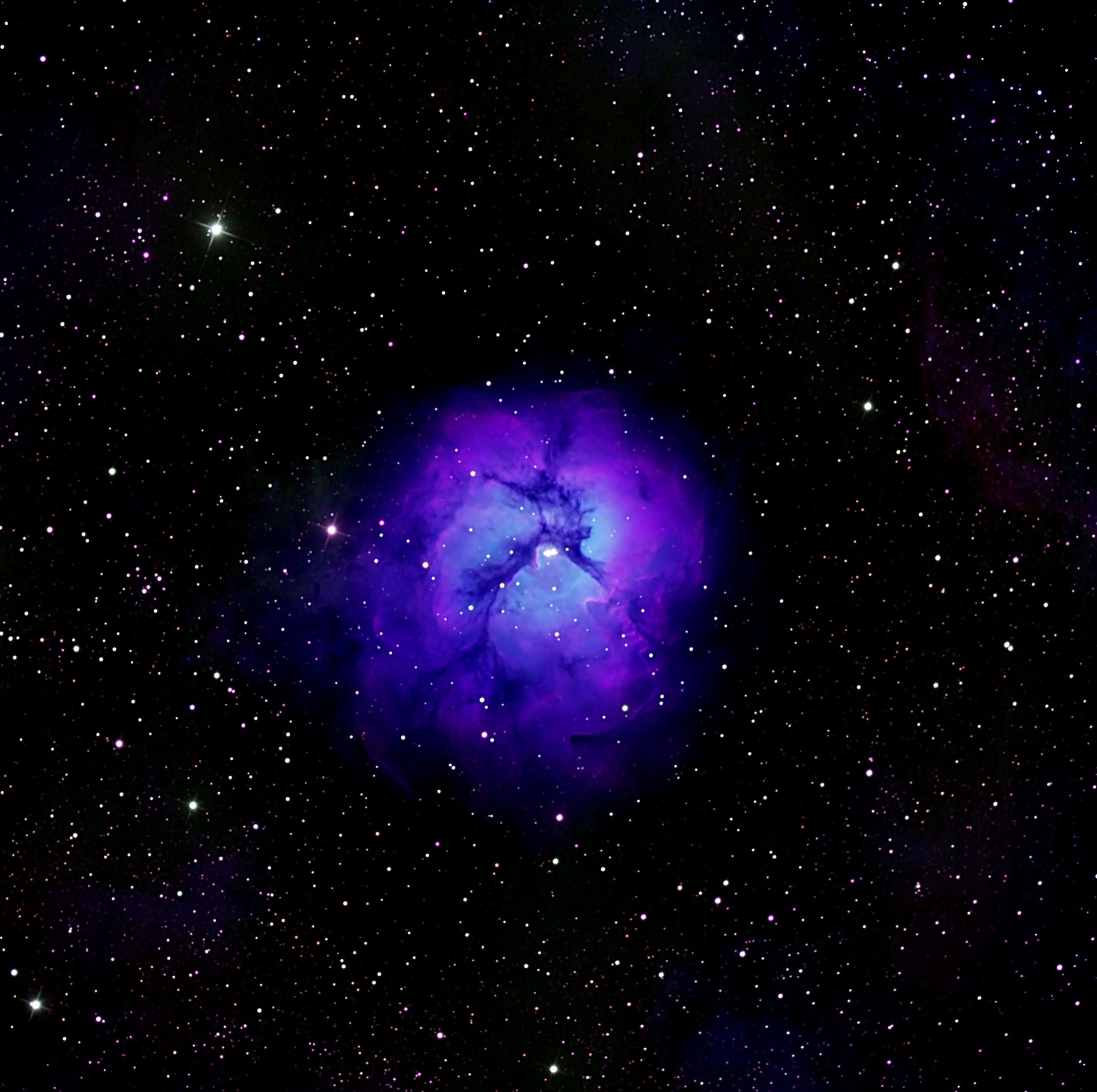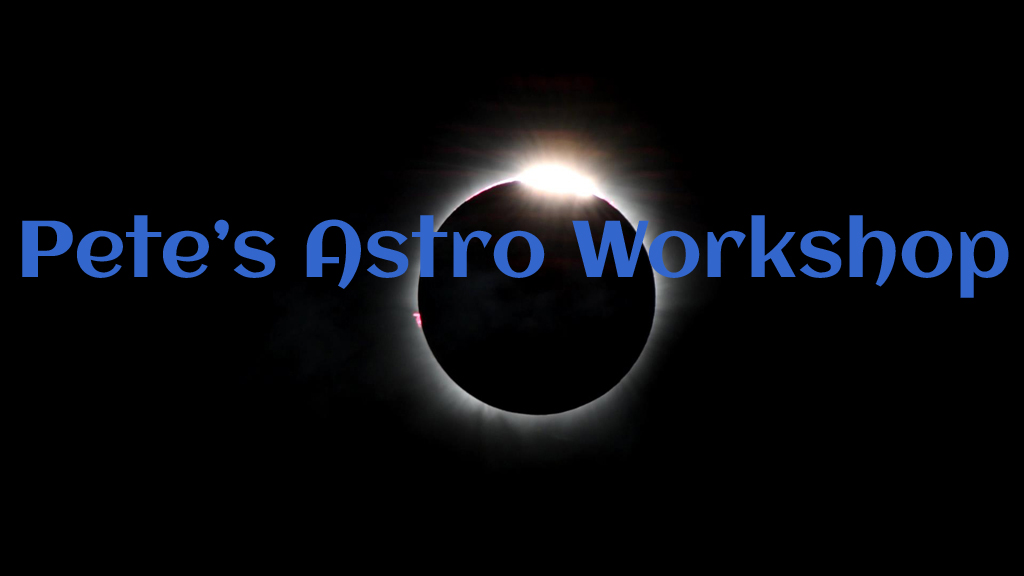M20 – The Trifid Nebula

The Trifid nebula is really four nebulae in one: an emission nebula, a reflection nebula, a dark nebula and a star cluster. The reflection nebula is not visible in this image, as will be explained below.
Also known as Messier 20, the Trifid is large – about 40 light years across – though there is some uncertainty about its size because its distance is not precisely known, with estimates ranging from 3000 to 9000 light years.
It is a bright object, easily visible in binoculars at magnitude 6.5, and it lies in one of the richest regions of the sky.
As this is a narrowband image, I offer a short discourse comparing broadband and narrowband imaging:
In a broadband image, contributions from the three primary colour bands (red, green and blue) correspond to the colour receptors in our eyes, so such images look ‘natural’. Although few deep space objects are bright enough to activate our colour receptors (the cone cells in the retina) if they were bright enough, this is how we would see them. A narrowband image on the other hand comprises light collected from a very narrow range (or ranges) of the spectrum. The narrow bandpass filters used for this image effectively place a 3 nano-metre slit in front of the camera, which is tiny compared with the 100 nm-plus bandpass of broadband filters (R,G,B).
Our eyes have no experience of seeing in this way. They evolved to see the ambient light on earth, the broadband spectrum emitted by the Sun. The concept of seeing in narrowband is totally alien: it is analogous to listening to music played using just 3 spaced-out notes on a piano rather than the full keyboard.
So why would we want to capture images in this way? Because these wavelengths are very interesting to astronomers as they yield information about the physical processes going on in these nebulae. For example, hydrogen is the most common element in the universe and when clouds of it are irradiated by powerful starlight they glow, revealing their presence and their structure. For amateur astrophotographers there is another advantage, as narrowband images are much less affected by light pollution and moonlight, so it is possible to image even in cities or other areas suffering skyglow.
Because there is no ‘natural’ way to view narrowband images, the way they are presented for human vision is therefore at the discretion of the person processing the image. Of the three filters used in this image, two (H-α and S-II) lie deep in the red end of the spectrum while OIII lies at the lower-wavelength end of the green band. But in order to see the contributions from the different filters, we have to assign them to our R,G and B channels – it’s not possible to have two red channels for example. The team publishing images from the Hubble space telescope decided to assign SII to red, H-α to green and OIII to blue – a scheme known as the Hubble, or SHO, palette. Since the H-α signal dominates many nebulae (due to the prevalence of hydrogen) many Hubble images have a distinctly green tint. Another palette, used by the team at the Canada-France-Hawaii telescope on Mauna Kea, assigns HOS to the RGB channels respectively.
For this image I found neither the SHO nor HOS palettes to be very pleasing aesthetically, so I assigned SII to the red channel, OIII to green and H-α to blue (an SOH palette!), boosting the signal from SII and OII to compensate for the very strong H-α signal.
The purer blue glow in the image is therefore the H-α signal, the magenta is a combination of H-α and SII, and the lighter blue in the centre is a mix of H-α and OIII. All these come from the emission nebula. Embedded in the nebula is a star cluster, and it is the powerful radiation from these stars that causes the gas to glow. Meanwhile the dark lanes that give the nebula its name (trifid meaning three-lobe – no connection to The Day of the Triffids) have their own designation as a dark nebula (Barnard 85). The fourth component of the Trifid is a blue reflection nebula made visible by reflected (broadband) starlight. It is situated to the left of the main nebula in this image (north is in the 10-o’clock direction) but it is not visible here as it shows up much more readily in broadband images.
Technical details:
Planewave CDK-14 corrected Dall-Kirkham reflector, FLI Proline P9000 cooled CCD camera and filter wheel with Astrodon 3-nm H-α, O-III and S-II narrowband filters. Total exposure times were 12.5 hours through each filter. All processing carried out in PixInsight.


0 Comments